Technology has simplified many complex activities. But the “democratization” comes with a tradeoff: the loss of formerly baseline skills. Fewer and fewer people can read a paper map or navigate without an electronic device to do the work for them.
When afield, those “old-time” skills have real value. And I’m never going to advocate losing those abilities.
But modernization is happening, even if some represent a possible loss of baseline skills. Fortunately, most of the changes are for the better, despite not everyone agreeing.
From my chair, I can’t see an argument against better ammunition, better guns, better optics and simplified technology. Especially if those advancements contribute to more humane harvests and fewer wounded or lost animals while encouraging younger people to get into hunting and shooting.
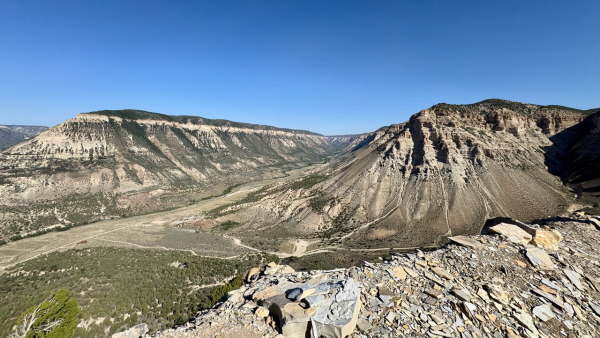

That’s the mindset I brought to Colorado’s Branded Canyon Ranch when invited to see the latest technology for hunting and shooting offered by Steiner. After their “predator Showcase” I’m convinced their newest technology can help even seasoned hunters have a more successful hunt, especially in difficult or unfamiliar terrain.
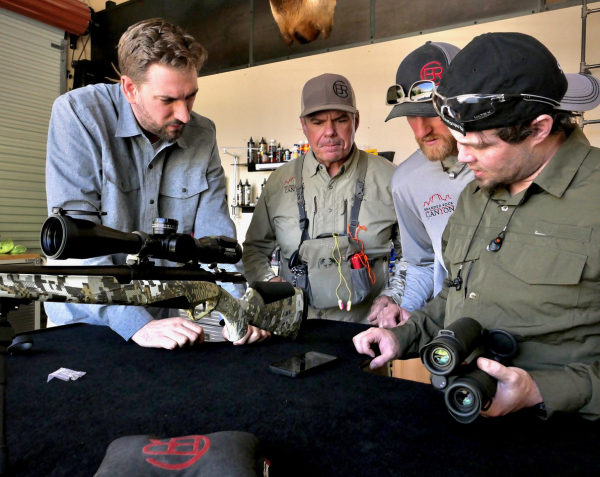
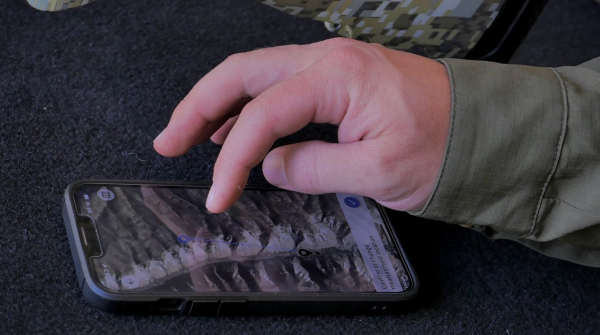
The showcase began with an introduction and brief on the gear we’d be using: Steiner’s ePredator 10x42 RF (rangefinder) binoculars, ePredator 8 riflescope and the Steiner Connect 2 app. Meshed (via Bluetooth or cell), these devices read a majority of the mystical/mathematical and atmospheric variables of long-distance shooting, giving shooters real-time ballistic information in yards.
The range finding binoculars communicate with the riflescope to literally deliver the shooting solutions in a heads up display. The display enables the shooter to simply “dial in the distance” of their shots without having to perform any complicated mathematical calculations for distance. Those calculations have confounded me for years. Using the Steiner system, hitting targets (targets, not animals) at distances I’d normally struggle with was almost reduced to “Lather. Rinse. Repeat” simplicity.
A formerly complicated set of steps was reduced to a simple, repeatable, process: Range (with the binos). Set the riflescope to the adjustments indicated in the scope, Put the adjusted red dot on the target and…squeeze. No “hold over.” No guessing.
But, as always, no flinching, jerking or slapping of triggers allowed. Great technology can’t overcome bad technique.
When I stayed inside the envelope for ePredator 8 riflescope (elevation adjustments on the turret maxed out at 1,000 yards), hits were far more frequent than misses. Hits from 350-900 yards were simple using the system. If I followed my steady-breathe-squeeze discipline, they were easily repeatable.
That doesn’t mean the system’s foolproof. At one point, I kept dialing in exact distances and missing the correct elevation by feet instead of inches. That’s when I realized one absolute requirement for the system: the requirement to read and follow directions exactly.
There are two zero adjustments that must be done on the riflescope. I’d only adjusted one -the mechanical zero on the turret. If you don’t calibrate the digital zero as well, 528 yards might as well be 528-miles. You are not going to hit your target.
Follow the steps correctly and you’ll wind up with a system that takes most of the complicated computational elements out of distance shooting. But it doesn’t mean that you can buy one or both of these range-finding tools (they work independently as well as meshed together) and immediately head out for long-distance hunting.
Hitting a static target on a range is one thing. Hunting a living, moving animal is another thing entirely, especially when you factor in unfamiliar terrain and potentially complicated shooting conditions.
On the range, if you miss a target, you correct and shoot again. If you wound an animal, you need to be prepared to quickly reengage and start the process of recovering the animal. Leaving an animal, wounded or dead, is not an option. Being able to shoot further doesn’t reduce the need for tracking skills, if anything, it magnifies them.
Concerns over hunters “outshooting” their recover efforts might be one rationale some state fame and fish departments use to ban the use of technology, especially when it comes to optics that include range-finding devices.
Banning new tools or technologies is a longstanding tactic used by many agencies in charge of wildlife conservation. Rather than simply blanket bans on equipment, I would suggest they focus more on developing hunting competency and encouraging advances that make it easier for beginners to acquire necessary skills. Modern integrated hunting systems like this one from Steiner, and others, deserve more than passing consideration from F&G departments. They have the potential to make all hunters better and simultaneously encourage more people to give hunting a try.
The Steiner system, when linked to their app, can help you find your downed game. Especially helpful in the longer distances of the west. Mountainous terrain isn’t just “bigger”, it’s more confounding. Distances on ranges can appear deceivingly simple. In rugged terrain, three hundred distances in a straight line can mean navigating hundreds of additional yards in elevation changes.
Hunters using the Steiner Connect App have the ability to enter their shooting location on Google maps (Steiner’s Jordan Egli tells me OnX integration is in the near future). When a shot is fired, the Connect App uses that starting point and its integrated compass to give you the point-of-impact spot on the map. Then the map program will guide you to that location. If you’ve done your part as a marksman, the harvested animal should be there, or reasonably close by. If the animal was wounded, it gives you a place from which to start tracking.
All that connected technology should make hunting unfamiliar terrain easier, but doesn’t remove the obligation of the hunter to know their limitations and to operate within them.
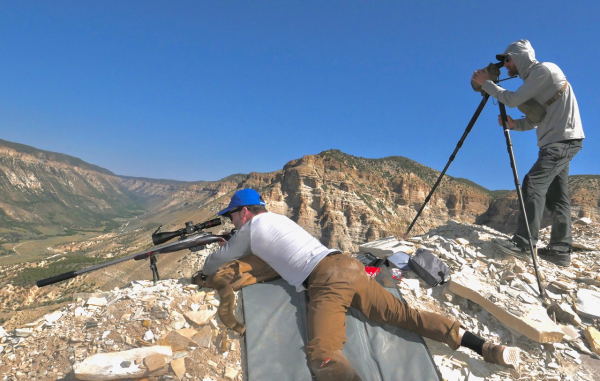
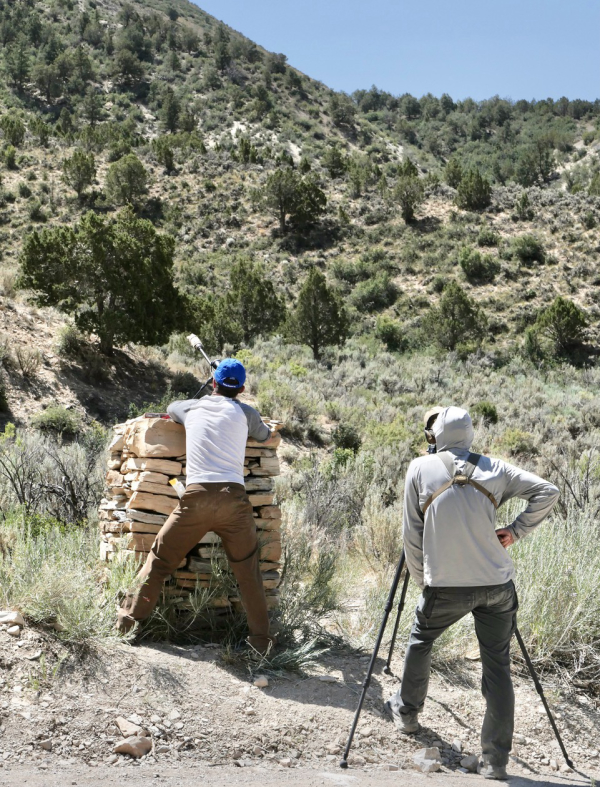
Using the integrated Steiner system, each of us repeatedly hit vital zones of targets at distances I would never consider when hunting. They included severe up-and down shooting angles. Those were automatically factored in and corrected inside the system. It makes shooting distances easier, but does not eliminate knowledge or experience. No system lacking tracking along the shot path can calculate and correct for the most challenging long distance variable: winds.
Reading wind takes practice, because wind plays a big factor in accuracy from muzzle to target. Having accurate distance information makes the estimation process simpler. Having tried the system, I wouldn’t want to be without it going forward.
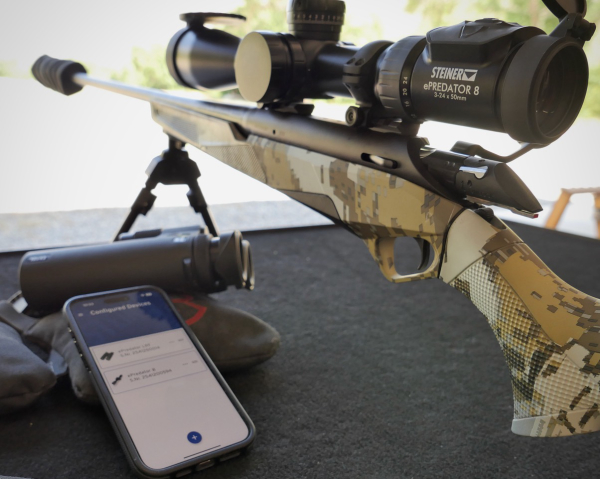
The total package isn’t inexpensive, running north of $4,000. But the top-to-bottom kit of binoculars and scope isn’t mandatory. Both the rangefinding binoculars and riflescope are standalone products.
The binoculars are capable of measuring distances far beyond the intended maximum range of the riflescope (1,000 yards). The riflescope is primarily intended for hunters, not long-range shooters.
The better shooters of our small group hit a “yeti” target at 1776 yards (the “patriot mile”) but those rounds were essentially coached into the target with the help of Branded Canyon’s excellent guides. I never connected, but that proved my lack of experience. The better shooters hit the target using the same rifle.
This isn’t intended to be a full review of the new Steiner system. That will require my using it on my personal rifle and actually hunting with it. But it’s certainly a system I’m looking forward to using. And as always, we’ll keep you posted.
— Jim Shepherd